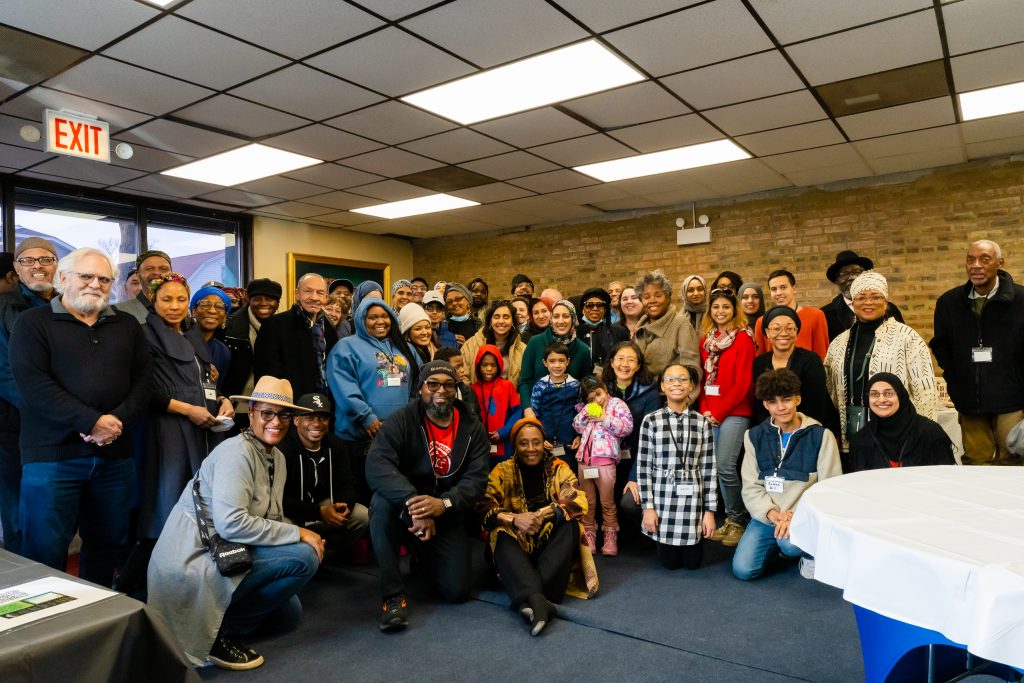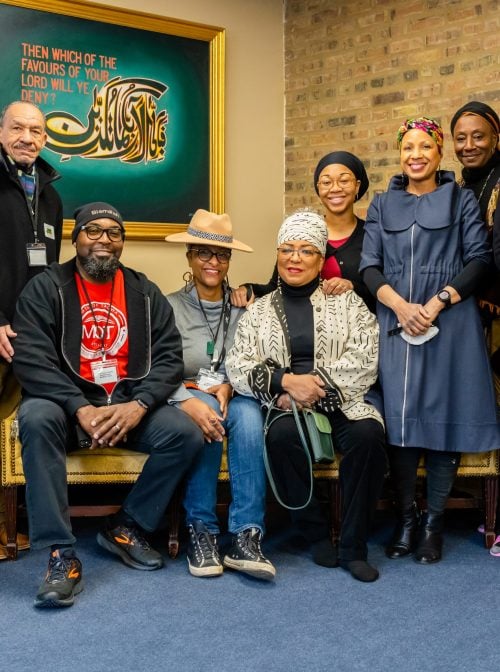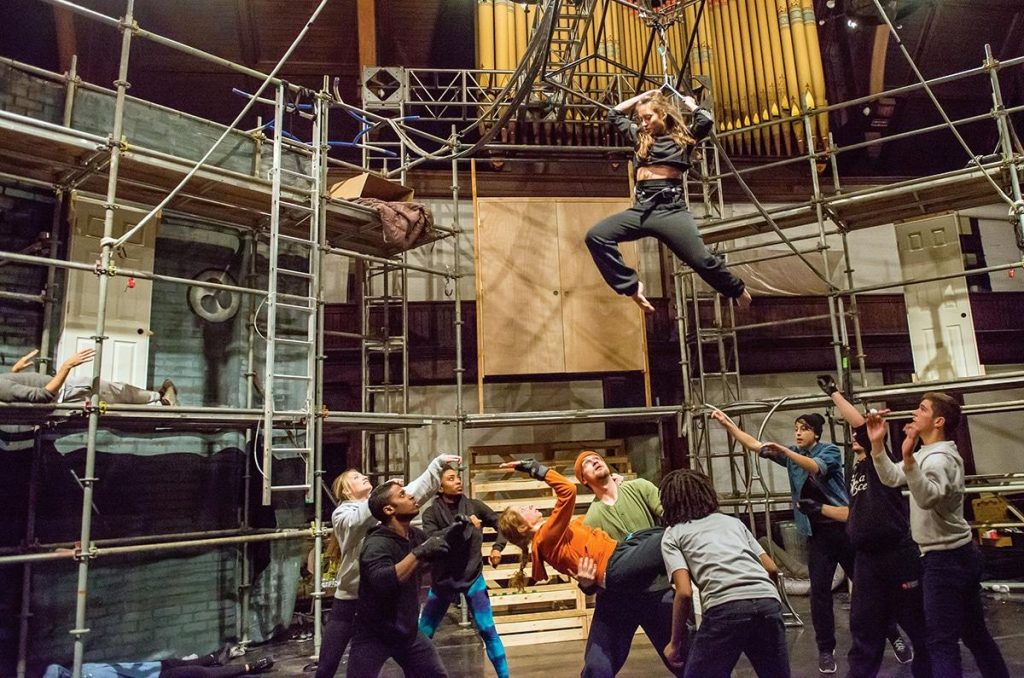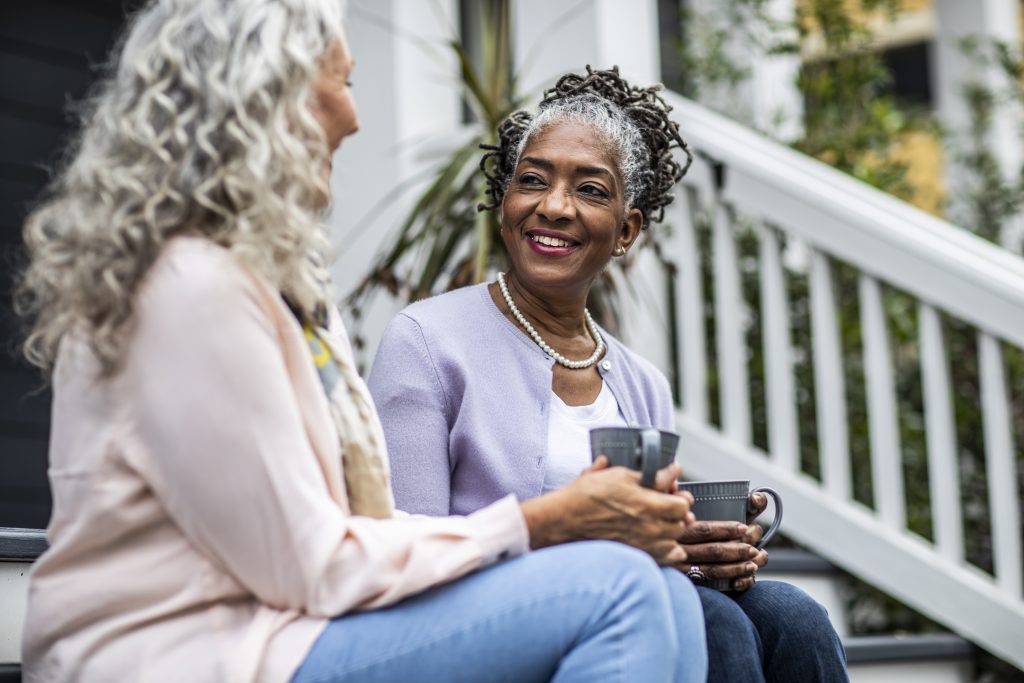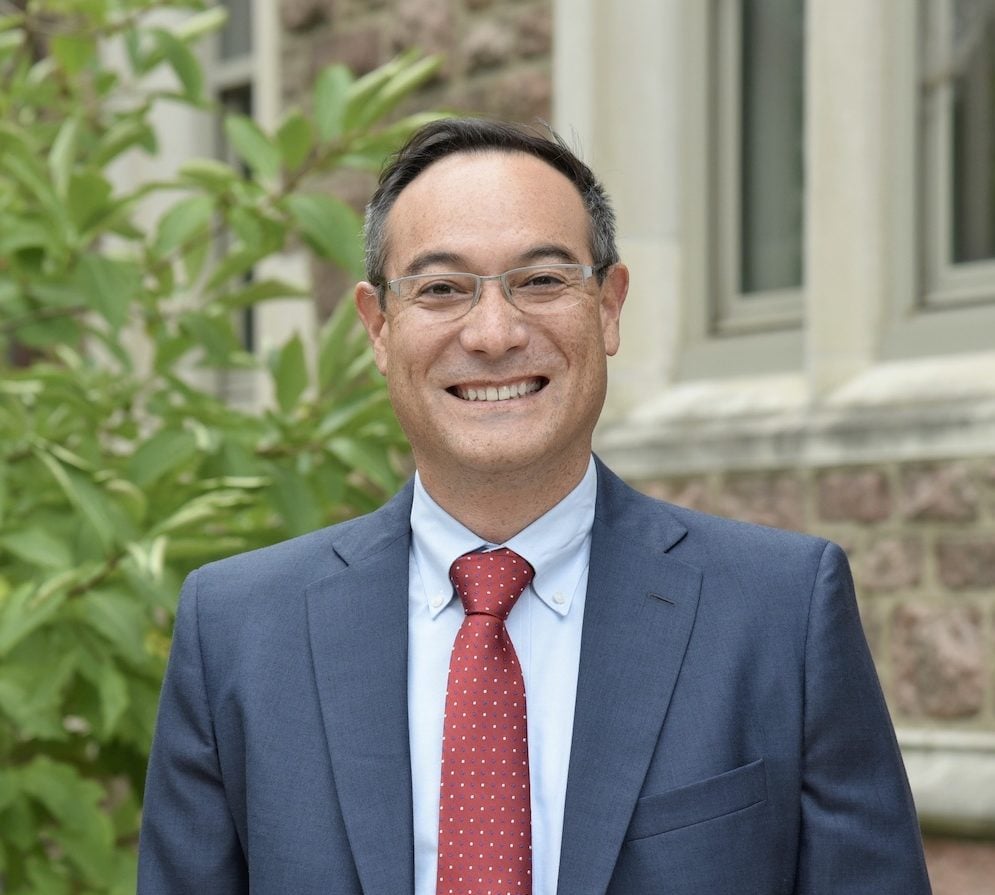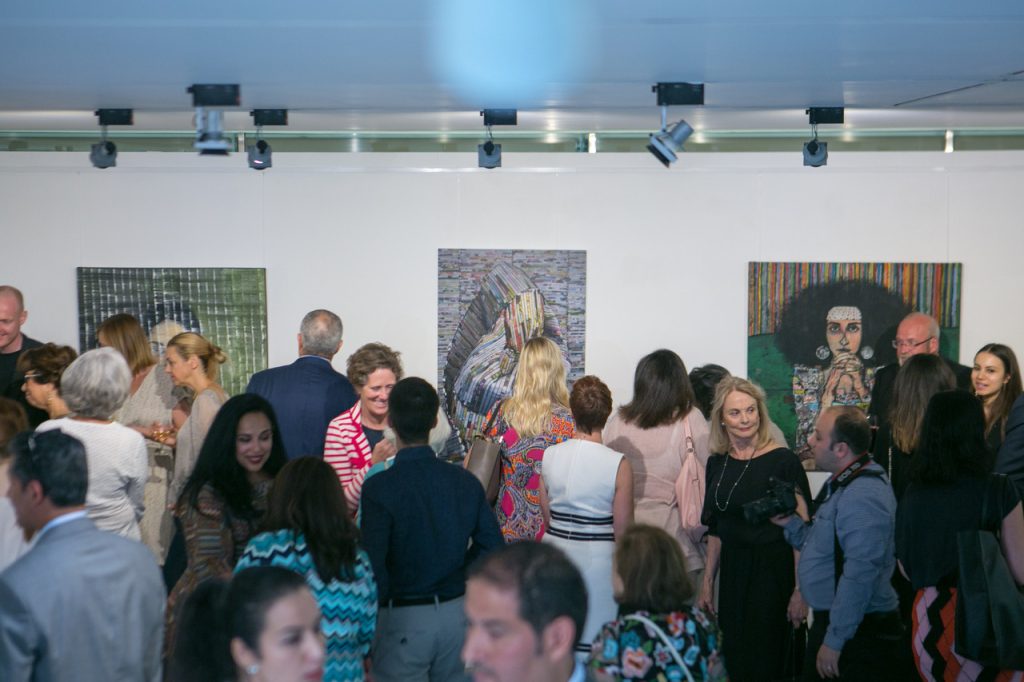Led by Imam Tariq El-Amin and his wife Dr. Aisha El-Amin, Masjid Al Taqwa’s inaugural Black Muslim History Bus Tour gathered over 70 interfaith partners on the South Side of Chicago on Saturday, February 19.
The crowd included religion professors, students and staff from Dominican University, The Lutheran School of Theology at Chicago, University of Chicago, among others, as well as diverse faith leaders, journalists, and other community members.
The five-hour tour began at 10 a.m. from Masjid Al Taqwa on S. Escanaba Avenue, then making brief stops at historic and sacred sites like Masjid Al-Faatir, one of the largest Chicago mosques that was co-founded by Muhammad Ali, Model Homes, which housed the children and chief aides of the founder of the Nation of Islam, a lamb processing plant that provided food and educational opportunities for Nation of Islam members, among other sites, and concluded with a visit to the Ephraim Bahar Cultural Center, a community information and outreach organization.
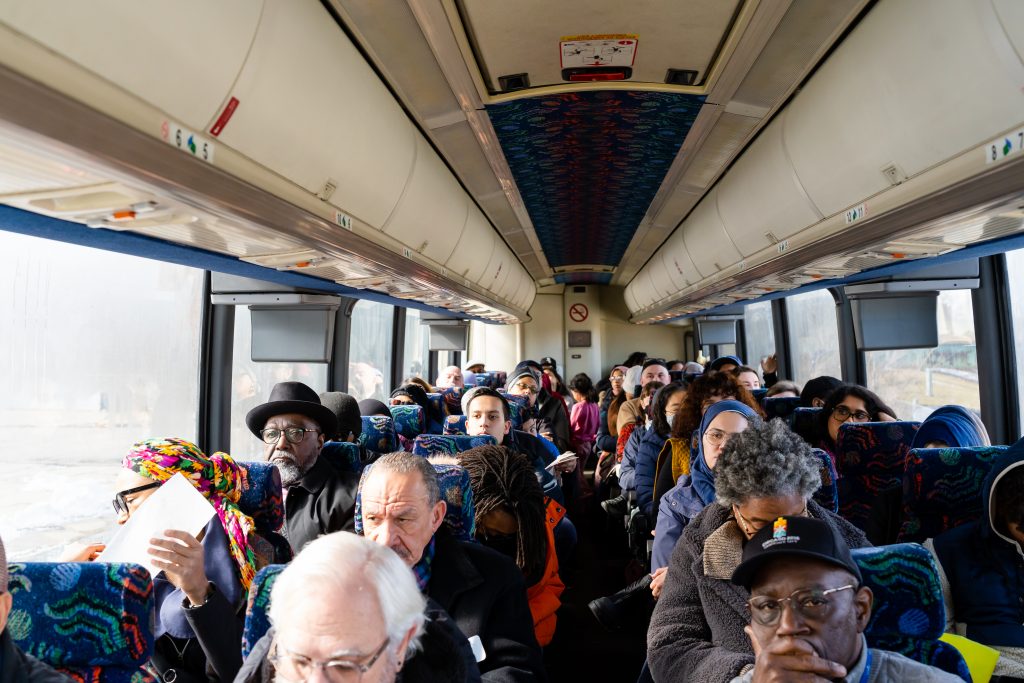
“The tour is an opportunity for us to build rapport and rekindle relationships with interfaith partners,” says Imam El-Amin. “I think one of the most important things one can do is to recognize one another’s presence, and from there, establish dialogue. I want to build real relationships that have real impact on people’s lives.”
The tour was inspired by the 2022 Chicago Interfaith Trolley Tour, which celebrated the convergence of diverse religious holidays like Ramadan, Passover, Ridvan, Vaisakhi, Easter, and others, in April last year.
In conversation with Silma Suba from Interfaith America Magazine, Imam Tariq El-Amin talks about the tour and what he hopes people will take away from it.
Silma Suba: Can you tell us about the history of Masjid Al Taqwa?
Tariq El-Amin: We are a masjid community that has been around for 20 years, and we trace our roots to Elijah Muhammad, the leader of the Nation of Islam, and his wife Clara Muhammad. After his death, his son Imam Warith Deen Mohammed took leadership and redirected to more orthodox Islam, and we are a product of the community that he built. I am the imam of the masjid and I oversee the day-to-day changes, the renovation of our space, and we have a community of staff members who lead prayers, offer spiritual care, and so on.
We are a community that has a long track record of community service. We do clothing giveaways, food, grocery boxes, winter care boxes for kids, and this summer we are also planning to do a theater summer camp as we are really into the arts.
SS: What’s the purpose of the tour?
TE: Aside from bringing attention to the presence of the Black Muslim community, it is also a recognition of their past contributions that have been made not just to Islam or America, but to the African American community as well. That entrepreneurial spirit that was demonstrated through the experience of the Nation of Islam, that was really unrivaled from a national sense.
For those that have been here in Chicago, I think it’s essential that people know about our community and also understand how that has continued to progress, especially with the leadership of Imam Warith Deen Mohammed. And it’s essential for them to see what’s coming in the future too, because it’s not just about recognizing or celebrating the past but also about what it looks like right now and where we are.
SS: Do you think the tour will help shift people’s often negative perspectives on Chicago’s South Side?
TE: Everything, every stereotype, every opinion has a context and within understanding of the context, there’s going to be the attention that an individual wants to derive from that context, and the lens they choose to see a particular context through is going to determine what they take away from it.
If we turn on the news, we’ll see instances of violence reported, we will hear about shootings, and on Twitter we’ll hear about carjackings and things like that. But that perception does not define the totality of existence in these communities.
What [the media] does not do is report acts of kindness. It does not report love, it does not report joy, and it does not report humanity. By definition, in order to garner interest, people have to report what is sensational. The tour definitely shows the city’s history, but it also shows people committed to building themselves and their communities, people who are taking responsibility.
As far as the stereotypes are concerned, I think that this tour may serve to get people to broaden their perception and it will maybe even push them to ask questions about those stereotypes and how they’re formed, and how the context of those environments is ignored. Because those are very deep, deep conversations. It’s not a soundbite. It’s not something that you can just kind of walk away with and have a quick answer. You really have to sit down and examine why environments are the way that they are. Is it they are intended to be that way? And why is it the case? I hope the tour offers a deeper context for people to see the humanity of these areas.
Photos taken by Ronald Muhammad.
